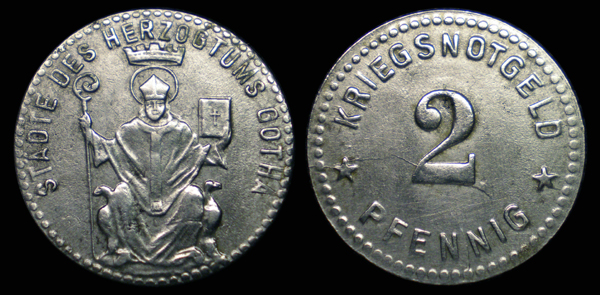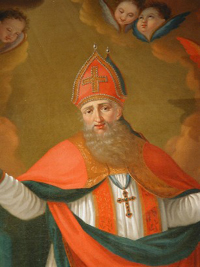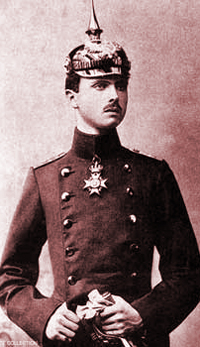
STADT / DUCHY OF GOTHA (GERMAN) 2 PFENNIG NO DATE
L- 160.6 City of the Duchy Gotha (Saxe-Coburg-Gotha) Iron 2 Pfennig Coin Depicting Saint Gotthardus (Gotthard) Bishop of Hildesheim Enthroned.
|
This zinc coin shows the Gotha city crest depicting St. Gotthardus, Bishop of Hildesheim, enthroned. It was issued by the city of Gotha and was meant to be used as small change. Obverse: 'Stadte des Herzogtums Gotha' City of the Duchy of Gotha / Reverse: 'Kriegsnotgeld' War Emergency Money. The city arms shows St. Gotthardus, Bishop of Hildesheim. The saint appears in the oldest known seal of the city dating from 1250. The exact reason this town chose to depict Gotthard, a bishop of Hildesheim in lower Saxony, is unclear as there appears to be no historical relation between this city and the bishop. One of the oldest towns in Germany, Gotha is a part of the Thuringian state located in the very heart of Germany. The village was first mentioned in a document signed by Charlemagne in 775 identified as Villa Gotaha or "Good Waters", thus it has existed since at least the 8th century. Gotha received its city-charter in the 12th century and has since played an important role in business, art and culture in the area. The town gained an even greater importance when it was chosen as the capital of the Duchy of Saxe-Gotha in 1640 and later as one of two capitals of Saxe-Coburg-Gotha in 1826. Aptly named the City of Natural Sciences and Arts, it has been a cultural and historical centre of Thuringia. Gotha is home to the imposing former ducal fortress of Schloss Friedenstein (Friedenstein Castle), Germany’s oldest early Baroque palace, built between 1643 and 1655. Although this coin is undated, it was most likely minted late in World War I. It is identified as a coin of the city of the Duchy of Gotha which ceased to exist just days after the war. The coin was likely minted sometime in 1917 and/or 1918, during the last years of the reign of Duke Charles Edward, the last Duke of Saxe-Coburg-Gotha. Charles Edward was grandson to Queen Victoria and her husband, Prince Albert of Saxe-Coburg-Gotha. In World War I Charles Edward took the side of his cousin, the German Emperor Wilhelm II, over his closer relations in Britain. He was, after all a German Duke and a part of the German Empire. Once war broke out he served as a general in the German Imperial Army. He was branded a traitor to his peers in Britain and lost all claims to any British royal family ties. He was stripped of all official rights and titles there. Gotha had for some time been home to a significant socialist movement. The German socialist party (SPD) was founded in Gotha in 1875. This German socialist movement was made stronger by the Communist Revolution in Russia. Charles Edward had always opposed the growing socialist movement and on November 18, 1918, just days after the signing of the armistice treaty, his fears of socialism would become justified. During the post World War I upheaval and power struggles, the newly formed Workers and Soldiers Council of Gotha forced Charles Edward to sign a declaration relinquishing any hereditary right to rule. He was not the first and he would not be the last. The German nobility as a legally defined class was abolished on August 11, 1919, all royalty in Germany lost their official privileges. Spurned by his British family and deposed in Germany, Charles Edward joined the Nazi Party in 1935. He rose to the rank of Obergruppenführer (Senior Group Leader, a rank inferior only to Reichsführer-SS Heinrich Himmler) in the SA and served on the Reichstag. Dressed in his SA uniform, he attempted to act as an ambassador of Anglo-German good will. Needless to say, little came of his efforts. After the War he was arrested for his support of, and his various roles in, the Nazi party. In 1946 he was tried, convicted, and forced to pay heavy reparations which stripped him of much of his wealth.
Gotha became a part of the soviet occupied zone and eventually a part of the German Democratic Republic. The Soviets would confiscate most of his family holdings in Gotha. He would live in relative seclusion in Coburg West Germany until his death in 1954 at the age of 69. After significant reconstruction after the second world war, and after German reunification, Gotha is again today a town known for its historical and cultural attractions as well as home to industry, science and the arts. |




